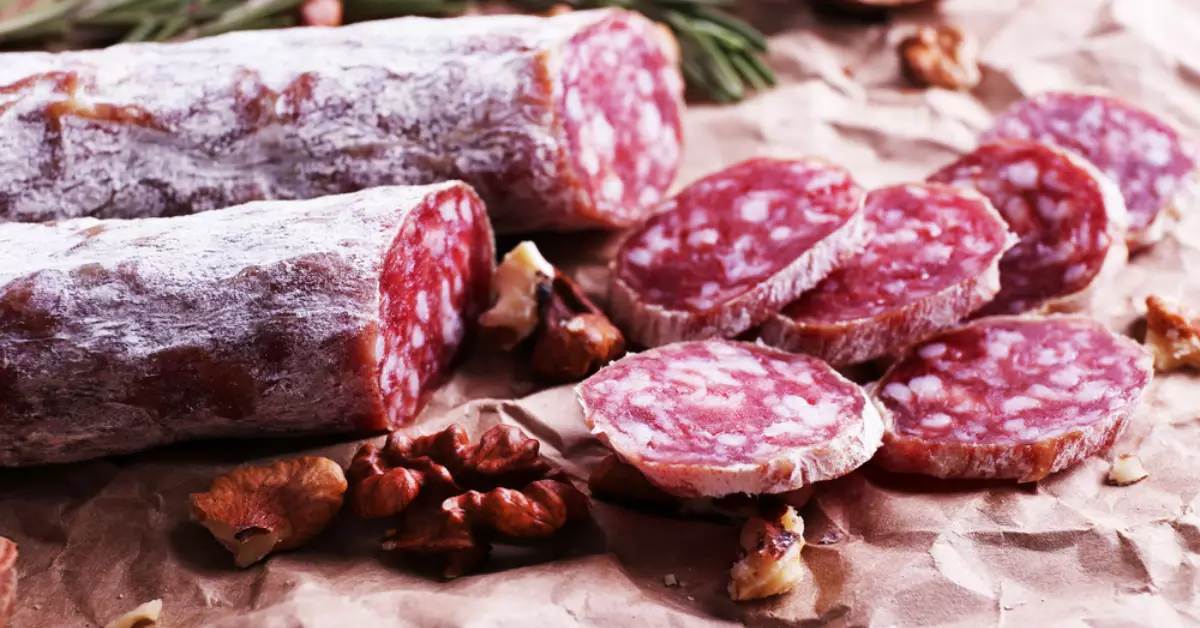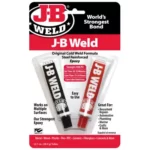Jerky is a beloved snack worldwide, known for its rich flavors and long shelf life. Traditionally, jerky is created by drying meat to preserve it, a practice dating back to ancient times. This process is what gives jerky its unique texture and flavor, but it’s also critical for preservation.
However, improper handling and storage can lead to a common problem: mold growth. Mold can render jerky inedible, causing not only a loss of your favorite snack but also potential health risks.
Jerky preservation, therefore, is a crucial aspect of enjoying this timeless treat. Through mindful handling, proper storage, and a few simple tips, mold growth on jerky can be effectively prevented, ensuring its longevity and your enjoyment.
Causes of Jerky Mold
Moisture and Its Role in Mold Growth
One primary cause of mold on jerky is excess moisture. Even though jerky is dried meat, it can still contain a small amount of moisture. When sealed in a container, this residual moisture can create a conducive environment for mold growth.
Importance of Proper Air Circulation
Another contributing factor to jerky mold is lack of air circulation. Storing jerky in tightly sealed containers without adequate airflow can foster mold development, as molds thrive in stagnant, moist conditions.
Basics of Jerky Storage
Proper storage of jerky plays a pivotal role in extending its shelf life and preventing mold growth. A fundamental understanding of the optimal storage conditions for jerky can help maintain its freshness and quality for a longer duration.
Proper Storage Containers for Jerky
Choosing the right storage containers for jerky can significantly affect its longevity and susceptibility to mold. Here are some key points to consider:
- Airtightness: While a certain degree of airflow is required to prevent mold, exposure to too much air can lead to oxidation and spoilage. Airtight containers can balance these factors, offering protection while maintaining freshness.
- Material: The material of the container can also influence jerky preservation. Glass and food-grade plastic are generally good choices as they don’t react with the jerky. Metal containers should be avoided as they can react with the salts in the jerky, affecting its flavor.
- Size: The size of the container should be appropriate for the amount of jerky being stored. If the container is too large for the quantity of jerky, it can lead to unnecessary air exposure, accelerating the spoilage process.
Ideal Storage Conditions
The storage conditions can also contribute to the longevity of the jerky. Here’s what to consider:
- Temperature: Jerky should be stored in a cool and dark place, away from heat sources. Warm temperatures can speed up spoilage and promote mold growth.
- Humidity: High humidity levels can encourage mold growth. Therefore, it’s crucial to store jerky in a low humidity environment. If you live in a humid area, consider using desiccants to absorb excess moisture.
- Light: Exposure to direct sunlight can degrade the quality of jerky over time. Therefore, it’s advised to store jerky in a dark place or in an opaque container.
Tips to Prevent Jerky from Molding
Keeping jerky mold-free is achievable with careful attention to the drying and storage process. Here are some additional tips to help prevent mold growth on your jerky.
Importance of Drying Jerky Thoroughly
One crucial step in preventing mold growth in jerky is ensuring the jerky is thoroughly dried before storage. Here’s how:
- Proper Dehydration: If making jerky at home, it’s essential to use a quality dehydrator or oven to achieve optimal dryness. The drying time will vary depending on the thickness of the meat and the dehydrator’s temperature.
- Cooling Before Storage: After drying, let the jerky cool completely before storing it. Storing jerky while it’s still warm can lead to condensation, which can promote mold growth.
The Role of Preservation Techniques
There are various preservation techniques you can use to further protect your jerky from molding. Here are a few methods:
Use of Vacuum Sealing
Vacuum sealing can be a highly effective method to prevent mold growth in jerky. Here’s why:
- Removal of Air: Vacuum sealing works by removing air from the packaging. Since mold requires oxygen to grow, vacuum sealing can create an inhospitable environment for mold.
- Longer Shelf Life: Vacuum sealing can significantly extend the shelf life of jerky, especially when combined with refrigeration or freezing.
Role of Desiccants
Desiccants, like silica gel packets, can be beneficial in preventing jerky from molding. Here’s how:
- Absorb Moisture: Desiccants work by absorbing excess moisture in the container. This can be especially useful in humid climates where moisture control is a challenge.
- Affordable and Easy: Desiccants are relatively affordable and easy to use. Simply place a packet in the storage container with the jerky.
Refrigeration and Freezing
Refrigeration or freezing can be effective methods for long-term storage of jerky. Here are some points to consider:
- Inhibit Mold Growth: Cold temperatures can inhibit mold growth, providing a longer shelf life for the jerky.
- Maintain Texture and Flavor: While freezing jerky can slightly alter its texture, it generally helps maintain its flavor over time.
- Storage Bags: If freezing, consider using freezer-safe bags to prevent freezer burn.
Safety Measures When Dealing with Moldy Jerky
It’s important to handle moldy jerky safely to prevent any health issues. Here’s what to keep in mind:
Identifying Mold on Jerky
Spotting mold on jerky early can prevent the mold from spreading and minimize the amount of jerky that needs to be discarded. Here’s how to identify mold:
- Visible Signs: Mold on jerky often appears as white, green, or blue fuzzy spots. This can be accompanied by a change in texture or a slimy feel.
- Smell: Moldy jerky may have a musty or earthy smell, which differs from the normal smoky or meaty aroma of jerky.
Safe Handling and Disposal of Moldy Jerky
If you identify mold on jerky, it’s crucial to dispose of it properly. Here’s how:
- Personal Protection: Always wear gloves when handling moldy food to prevent exposure to mold spores.
- Avoid Cross-Contamination: Dispose of the moldy jerky in a sealed bag and thoroughly clean the storage container to prevent mold spores from contaminating other food items.
Health Implications of Consuming Moldy Jerky
Consuming moldy jerky can lead to food poisoning and other health issues. Here are some of the risks:
- Food Poisoning Symptoms: Consuming moldy jerky can cause symptoms like nausea, vomiting, diarrhea, and abdominal pain.
- Allergic Reactions: Some people may have allergic reactions to mold, leading to symptoms such as rash, itching, and difficulty breathing.
- Long-term Health Risks: Some types of mold can produce mycotoxins, which can have serious health effects over time, including neurological problems and even cancer.
Frequently Asked Questions
Can I Eat Jerky If It Has Mold On It?
No, it is not safe to eat moldy jerky. Mold on jerky indicates that it’s spoiled and can cause serious health issues if consumed.
Can I Remove Mold from Jerky and Then Eat It?
It is not advisable to eat jerky after removing visible mold. Mold spores can penetrate the surface of the jerky, so even if you remove the visible mold, invisible mold spores may remain.
How Long Can I Store Jerky Before It Molds?
If properly stored, jerky can last 1-2 months without refrigeration. However, this can extend up to 6 months if refrigerated, and up to a year if frozen.
Conclusion: Keeping Your Jerky Fresh and Mold-Free
Preserving jerky from mold is all about managing the elements that contribute to mold growth. Keeping the jerky dry, using appropriate storage techniques, and adhering to safety measures will help maintain the quality of the jerky.
Ultimately, the goal is to enjoy your jerky without worrying about potential mold contamination. By following the tips outlined in this article, you can ensure that your jerky stays fresh, tasty, and most importantly, mold-free.
In a world where the consumption of processed and unhealthy snacks is increasing, jerky offers a healthier alternative. So, let’s make the most of it, and make sure it stays fresh and mold-free for us to enjoy.







